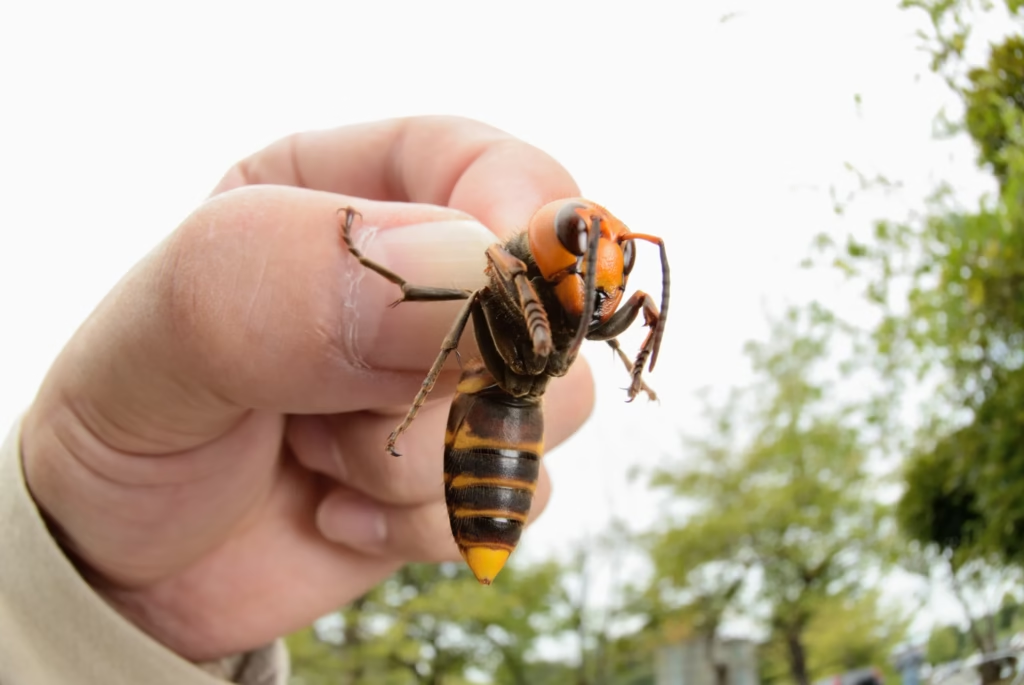LUANG PRABANG, Laos — A father-son holiday in the hills above the Mekong turned to heartbreak when Daniel Owen, a 47-year-old American educator, and his 15-year-old son, Cooper, were attacked and fatally stung by Asian Giant Hornets at an eco-adventure resort near this UNESCO-listed city.
The pair, who lived in Haiphong, Vietnam, died hours later despite urgent treatment, leaving friends, colleagues, and families across borders grieving a beloved teacher and his promising son. Witnesses and park staff described panic on a zipline platform after a nest, disturbed during a descent, triggered a swarm.
According to the NY Post, Owen, who grew up in Idaho Falls, Idaho, had spent close to twenty years working in international schools. He led QSI International School of Haiphong, part of the Quality Schools International network, and was known for his kindness and commitment to students.
“Daniel was the heart of our school,” said academic coordinator Clarissa Sammons in a statement on QSI’s Facebook page. “He and Cooper were inseparable, always planning their next adventure. This loss devastates us all.”
The incident happened at Green Jungle Park, a well-known eco-resort set along the Mekong about 40 minutes by boat from Luang Prabang’s centre. Tucked into the foothills of Chomphet District, the park offers canopy ziplines, rope courses, and access to the Hoi Khua Waterfall, drawing visitors keen to experience Laos’ rich biodiversity.
Midway through a half-day course, after crossing a 300-metre cable, the group prepared to rappel from a tall platform tree. That is when the Asian Giant Hornets emerged.
The Owenses reached Laos on 13 October, rounding off a school break with what friends called a bucket-list trip. Owen, who held a master’s degree in education, moved abroad with his family in 2006 to serve in international schools, drawn to QSI’s mission of “Success for All.”
In Haiphong, a busy port city in northern Vietnam, he led a campus of about 400 students representing 30 nationalities, supporting STEM programmes and cultural exchanges. Cooper, a Year 10 student who loved football and photography, admired his dad. Their social media showed snapshots of street food in Hanoi and kayaking in Hạ Long Bay.
Luang Prabang, with its gleaming temples and saffron-clad monks, seemed an ideal break. They checked into a riverside guesthouse, browsed night markets, and toured the Pak Ou caves before booking Green Jungle Park. “They were laughing the whole boat ride over,” said fellow traveller Emily Hargrove, an American backpacker who shared the ferry. “Daniel joked about taking on the jungle giants, never guessing what was ahead.”
The morning began peacefully. A short ride in an electric buggy through flower gardens, a swim in the waterfall pools, and tandem ziplines with wide views of the river’s curves. As they unclipped from the final line, vibrations from harnesses appear to have disturbed a hidden nest inside the hollow of the platform tree.
Within moments, a dark cloud lifted from the trunk, hundreds of large hornets with orange heads flashing in the filtered light.
Asian Hornet Swarm
Their guide, a 28-year-old local named Somsack, shouted warnings in Lao and broken English while trying to bat the insects away. Owen pushed Cooper toward the ground and tried to shield him. “It felt like a plague,” Somsack told investigators through a translator.
“They stung everywhere, faces, necks, arms. The boy cried, but his father would not let go.” Hargrove, waiting below, heard the chaos. “Screams, then the hum. When we reached them, they were covered in welts and collapsing.”
Park staff carried them to a pickup, drove to a boat, then rushed upriver for about 45 minutes to Phanak Arocavet Clinic in Luang Prabang. Clinic director Phanomsay Phakan, an experienced rural medic, said both arrived conscious but struggling to breathe, with more than 100 stings each, later confirmed by autopsy.
There was no immediate anaphylaxis, but the venom from the Asian Giant Hornets caused rapid systemic damage. “We gave epinephrine, antihistamines, and fluids,” Phakan said. “They fought hard, but the toxin overwhelmed their kidneys and hearts.” Cooper lost consciousness first. Owen, still whispering to his son, followed within the hour. The U.S. Embassy in Vientiane confirmed the deaths and arranged repatriation as tributes from QSI alumni poured in.
Green Jungle Park, known for community-led conservation and sustainable tourism, paused operations for a safety review. Owner Vanhthong Keosavang expressed sorrow. “Our guides train for wildlife risks, but these hornets are invisible until you are too close.” Lao officials, citing climate-linked shifts in hornet behaviour, have begun placing nest detectors along adventure routes.
The Asian Giant Hornets and Their Deadly Reputation
Asian giant hornets (Vespa mandarinia), the world’s largest hornet, are native to temperate parts of East, South, and Southeast Asia, including river valleys in Laos. Queens can reach 5.5 centimetres in length, with wide wings and powerful mandibles.
In earlier times, the species drew more curiosity than fear. In rural Japan, some communities harvested nests for food, and festivals like Kushihara Hebo Matsuri still feature grilled wasp pupae.
As forests shrank and people moved deeper into wild areas, encounters rose. A series of attacks in China’s Shaanxi Province in 2013 by Asian Giant Hornets killed 42 people and injured more than 1,600 during a period of unusual heat. Japan records dozens of deaths each year, usually from many stings in a short time.
The greater danger comes from the group response. When a nest is threatened, scouts release alarm pheromones that rally others to strike at once. Stings feel like hot nails driven into skin, according to the Schmidt Sting Pain Index.
The venom mix is more toxic than a honeybee’s and can lead to tissue damage, sepsis, and organ failure, especially after many stings. Unlike bees, hornets can sting repeatedly and inject larger volumes of venom. Children and older adults face a higher risk. Thirty stings or more can overwhelm even healthy people.
Worldwide, Vespa mandarinia kills fewer people than road traffic, likely under 100 a year across Asia, but it can devastate honeybee colonies. A single scout can bring in a raiding party that wipes out a hive, decapitating workers and taking brood for protein. In Laos, where pollinators support rice, fruit, and other crops, this pressure adds to food security concerns.
In 2019, the species arrived in the United States, where headlines dubbed it the “murder hornet.” Authorities in Washington State worked to trap and remove nests at significant cost. By December 2024, the infestation in that state was declared eradicated.
In Laos, habitat loss linked to tourism and logging pushes nests closer to people. Experts, including Kyoto University biologist Jun-ichi Takahashi, warn that warmer conditions extend nesting seasons and raise the chance of human contact. Phakan, the clinic director, noted the trend. “We have seen three hornet fatalities this year, mostly visitors. Awareness saves lives.
















